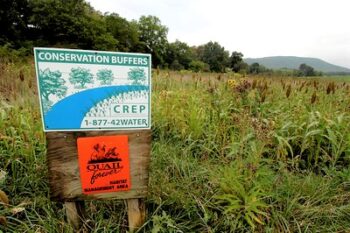
The U.S. Department of Agriculture is rolling out a number of initiatives to help American farmers, ranchers, producers and foresters mitigate the effects of climate change. It will provide essential support through its voluntary Conservation Reserve Program and invest more than $376 million in areas including innovation, soil health and training to educate the next generation of producers in climate-smart solutions.
USDA will open enrollment in its Conservation Reserve Program (CRP), one of the world’s most successful voluntary conservation programs, with higher payment rates, new incentives, and a more targeted focus on the program’s role in climate change mitigation. Its goal is to enroll an additional 4 million acres into the program, which will mitigate an additional 3 million metric tons of CO2 equivalent and prevent 90 million pounds of nitrogen and 33 million tons of sediment from running into U.S. waterways each year.
“We want to make sure CRP continues to be a valuable and effective conservation resource for our producers for decades to come,” said Secretary Vilsack.
“USDA will continue to find new and creative ways of putting producers and landowners at the center of climate-smart practices that generate revenue and benefit our planet.”
 Additionally, USDA will be investing in partnerships and initiatives to increase climate-smart agriculture, including:
Additionally, USDA will be investing in partnerships and initiatives to increase climate-smart agriculture, including:
- $330 million in 85 Regional Conservation Partnership Program projects
- $25 million for On-Farm Conservation Innovation Trials
- More than $21.7 million in programs to improve soil health and train the next generation of farmers and foresters in climate-smart solutions.


